Weird Universe Blog — April 28, 2024
The Computer’s First Code Poem
Scottish poet Edwin Morgan included "The Computer's First Code Poem" in his 1973 collection From Glasgow to Saturn.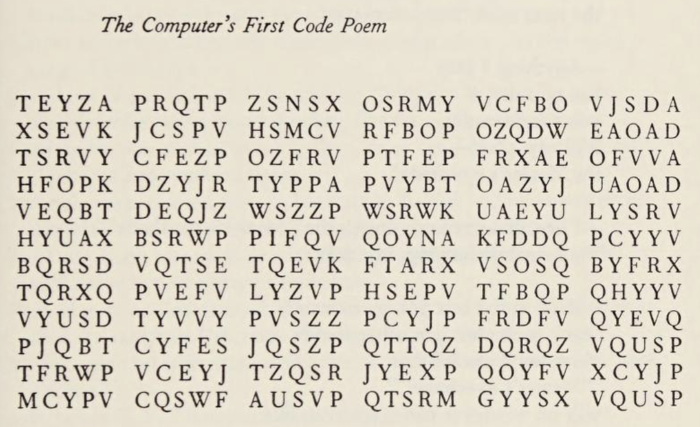
Despite what the title may imply, Morgan didn't actually program a computer to produce the poem. (Nor did he have the Loch Ness Monster pen "The Loch Ness Monster's Song" in the same collection.) However, the poem really is in code, as he later explained:
I didn't bother to try to crack the code. Instead, I found someone online (Nick Pelling) who had done it. Apparently it's a simple letter-substitution code, which produces:
dirty whist fight numbs black rebec
pinto hurls bdunt spurs under butte
fubsy clown posse stomp below xebec
tramp crawl kills kinky xerox joint
foxed minks squal above yucca shoot
manic tapir party upend tibia mound
panda strut jolts first pumas afoot
toxic potto still shows uncut aorta
swamp houri wails appal canal taxis
punks throw plain words about dhows
ghost haiku exits aping zooid taxis
That's not much more intelligible than the original poem. Pelling speculates that we can't rule out the possibility of a second hidden message with the first message.
Posted By: Alex - Sun Apr 28, 2024 -
Comments (0)
Category: Codes, Cryptography, Puzzles, Riddles, Rebuses and Other Language Alterations | Computers | Poetry
Hampstead Beatnik Party
This clip (only static for a soundtrack) from British Pathe is labeled "Beatnik Party (1960) Hampstead." But is it the same party described in the article?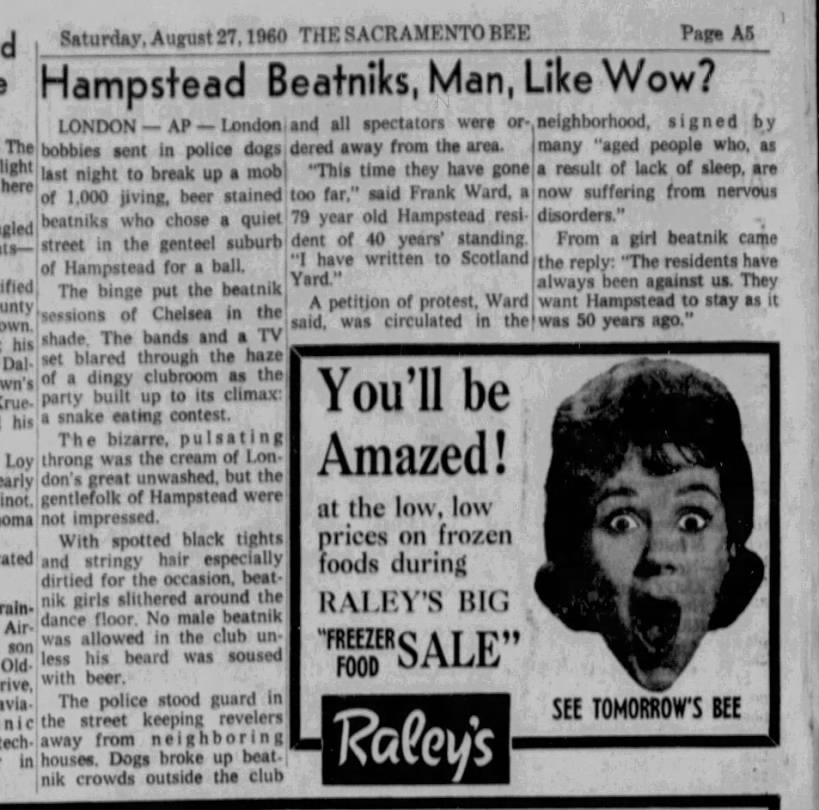
Posted By: Paul - Sun Apr 28, 2024 -
Comments (0)
Category: Dinners, Banquets, Parties, Tributes, Roasts and Other Celebrations | Police and Other Law Enforcement | Bohemians, Beatniks, Hippies and Slackers | 1960s | United Kingdom
April 27, 2024
And the answer is…
The Internet Archive offers a collection of "answer songs" from the 50s and 60s. I embedded a player below, but going to the Archive itself allows you to select which songs to play.We've previously posted about "answer songs," but here's the definition again (via wikipedia): "a song (usually a recorded track) made in answer to a previous song, normally by another artist."
It's a genre that, as far as I know, has now entirely disappeared.
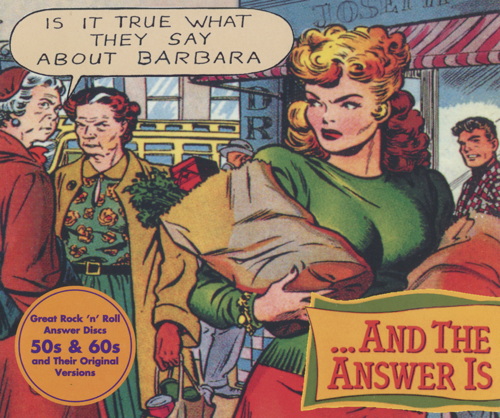
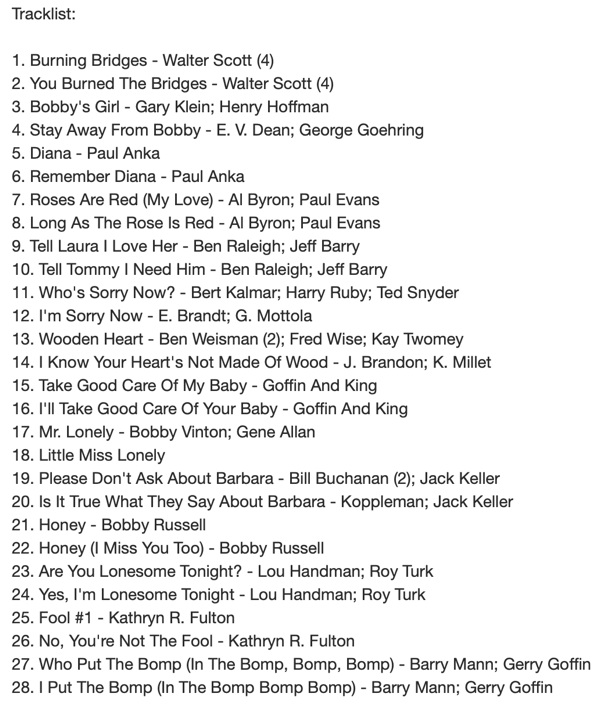
Posted By: Alex - Sat Apr 27, 2024 -
Comments (4)
Category: Music
Wild Life
Badminton on the prairie.Wild Life, Amanda Forbis & Wendy Tilby, provided by the National Film Board of Canada
Posted By: Paul - Sat Apr 27, 2024 -
Comments (0)
Category: Agriculture | Death | Regionalism | Stupidity | Cartoons | Twenty-first Century
April 26, 2024
Artists and their Sears appliances
In 1969, Sears ran a series of magazine ads to advertise its Kenmore line of appliances. The ads below all appeared in Better Homes and Gardens.The ads featured well-known artists (musicians, novelists, actors, etc.) who owned Kenmore appliances. I guess Sears was hoping to make itself seem like a more high-end brand by suggesting that people with good taste owned their products.
It's interesting to see the homes, and appliances, of these artists. For instance, Dave Brubeck apparently kept his washer and dryer in his living room.
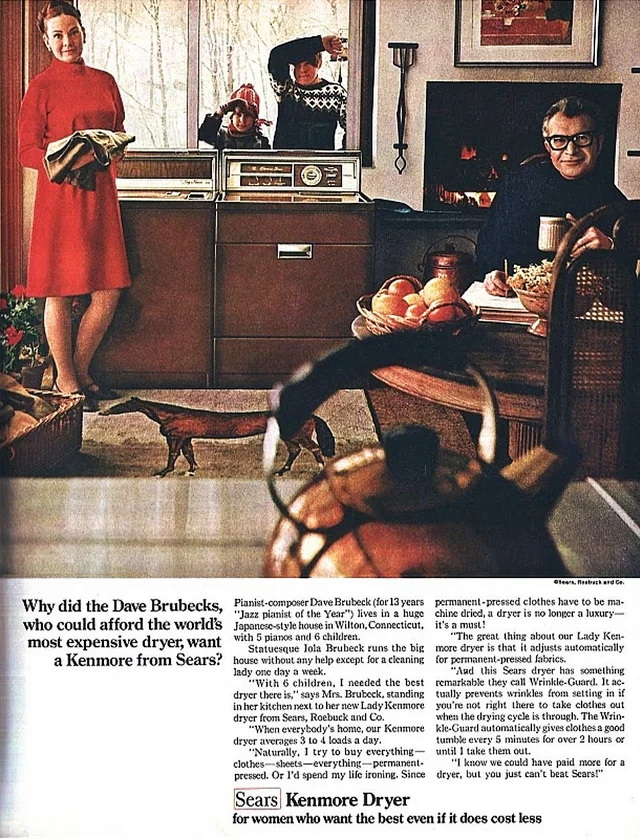
A week ago I had never heard of Pauline Trigere. Now she's appeared in two posts within the past few days. She should have had a loaf of bread wrapped in waxed paper in the background.
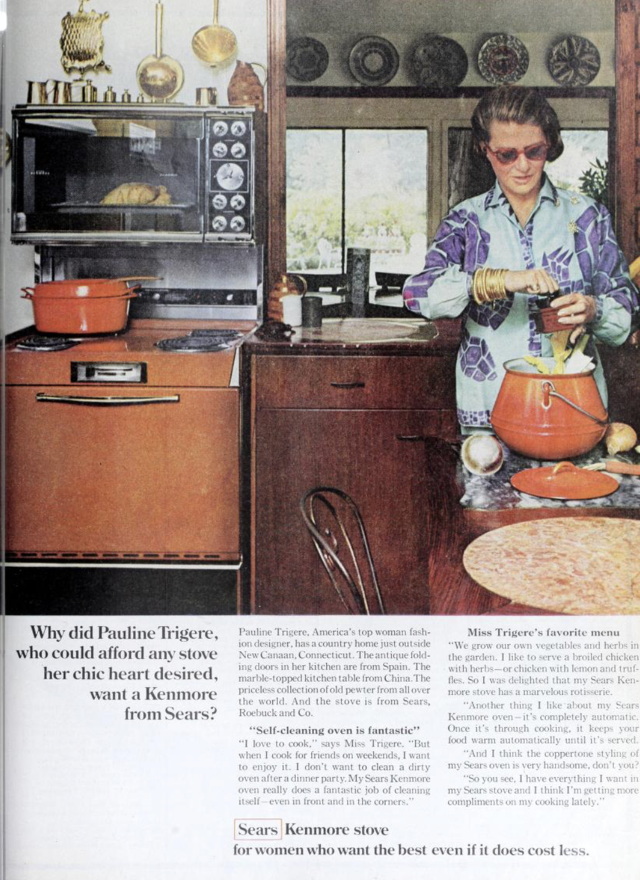
I wondered if one of the kids was Natalie Cole, but I think they're her younger twin sisters Timolin and Casey.
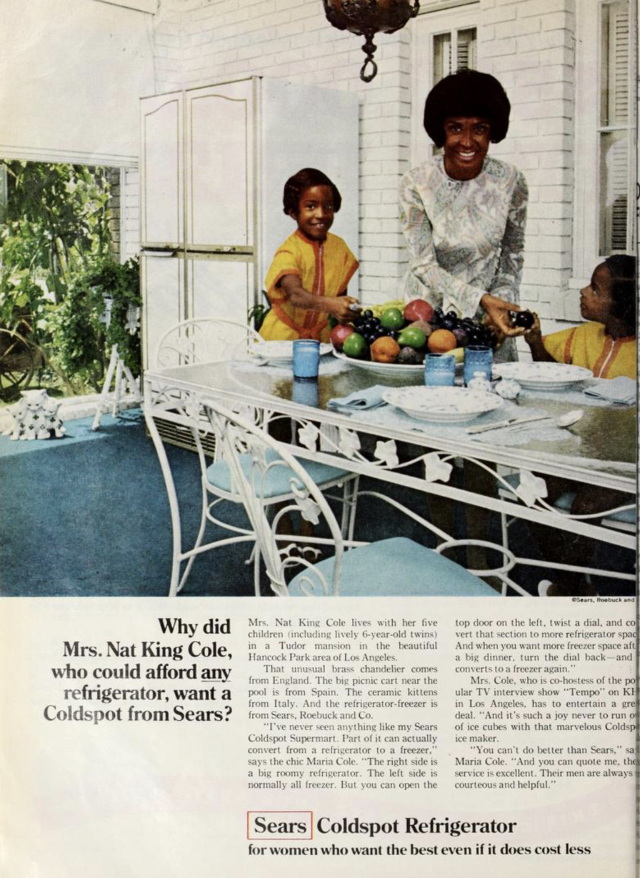
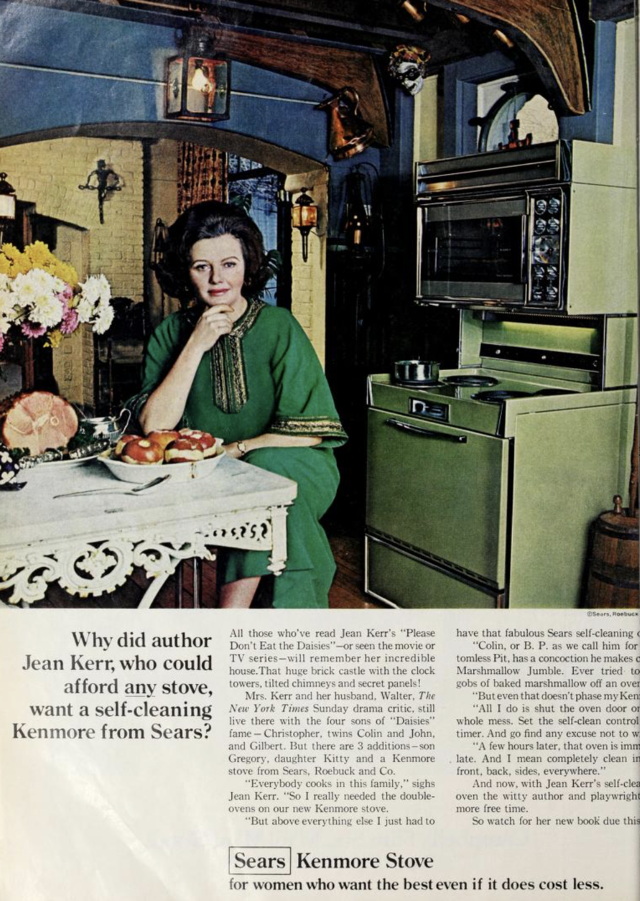
That's definitely not George Clooney (Rosemary's nephew). I'm pretty sure it's her son Miguel Ferrer.
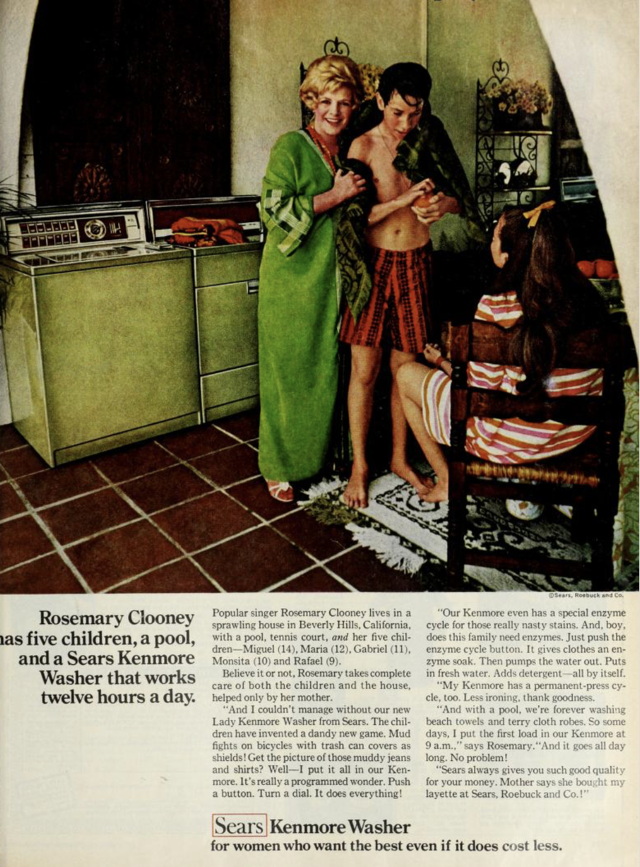
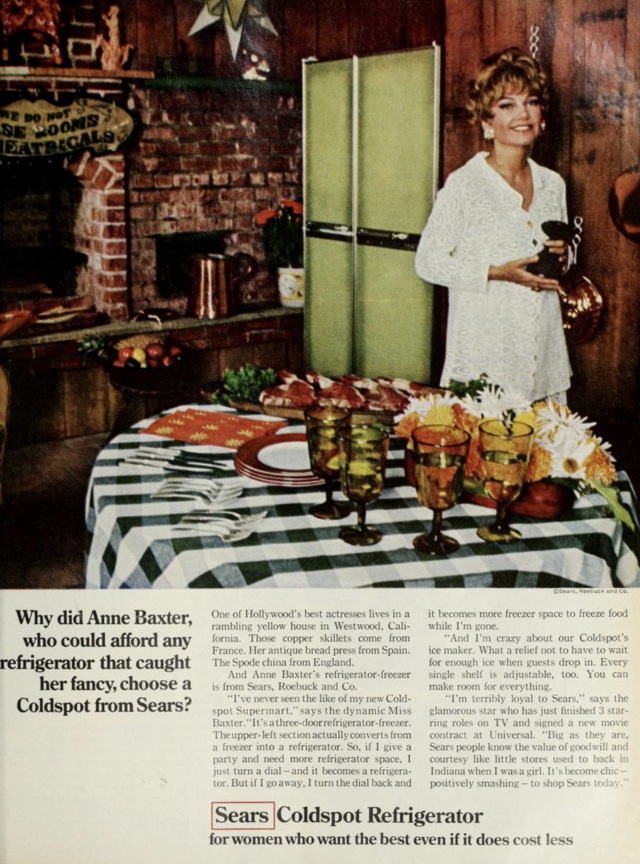
Posted By: Alex - Fri Apr 26, 2024 -
Comments (0)
Category: Celebrities | Advertising | Appliances | 1960s
My Boomerang Won’t Come Back

Posted By: Paul - Fri Apr 26, 2024 -
Comments (0)
Category: Racism | Stereotypes and Cliches | 1960s | Australia | Weapons
April 25, 2024
Device to self-administer gas
This curious device was featured in Mechanix Illustrated (July 1938), but no info was given about the inventor.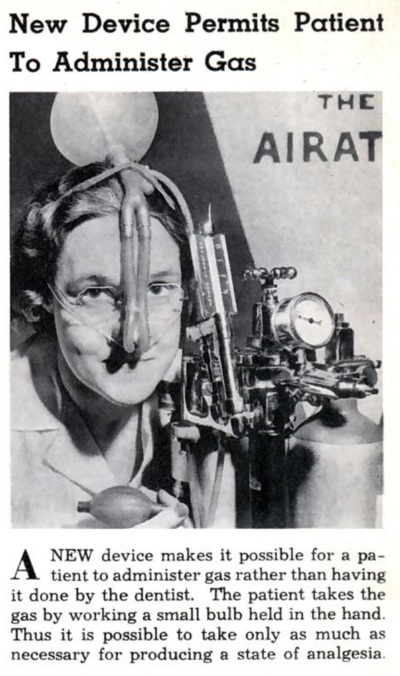
So I searched the patent archive. This patent granted to Justin Sholes in 1939 seems to be it:
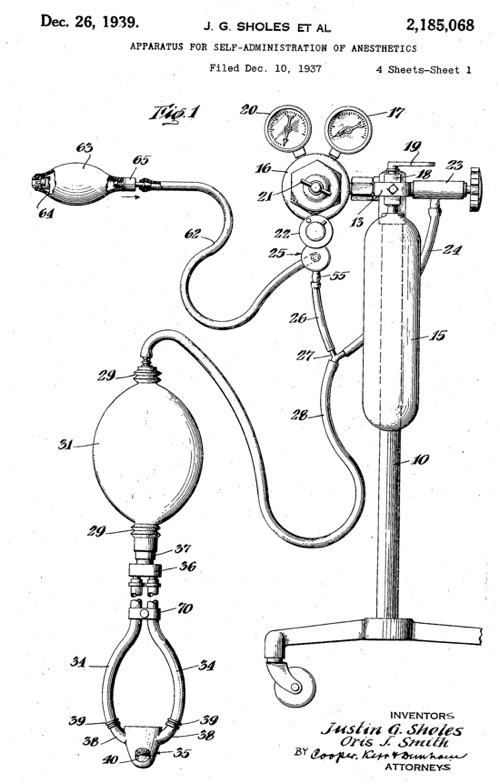
Posted By: Alex - Thu Apr 25, 2024 -
Comments (2)
Category: Drugs | Patents | 1930s
Fish Surgery
This is not a topic I had given much thought to, before encountering this report from 1955.Then I found more-current info.




Posted By: Paul - Thu Apr 25, 2024 -
Comments (1)
Category: Medicine | Fish | 1950s | Twenty-first Century
April 24, 2024
Buy bread in waxed paper
Buy bread in waxed paper and then lounge about with it while wearing a gown designed by Pauline Trigere.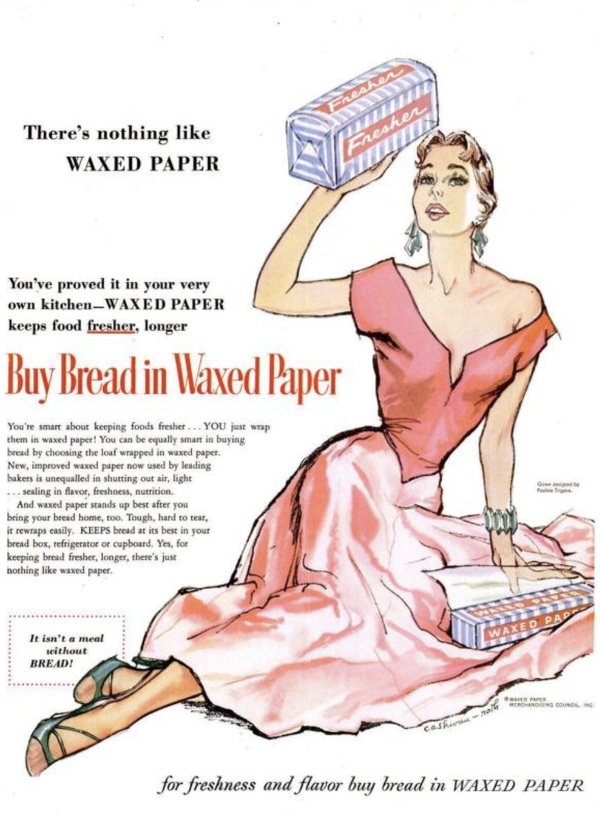
Posted By: Alex - Wed Apr 24, 2024 -
Comments (0)
Category: Fashion | Food | Advertising | 1950s
Trick Gun for Secret Society Initiations
Imagine the sheer delight of the person being initiated, when the realistic looking gun is pointed at them, a loud explosion occurs--but only water emerges! High-larious!Full patent here.
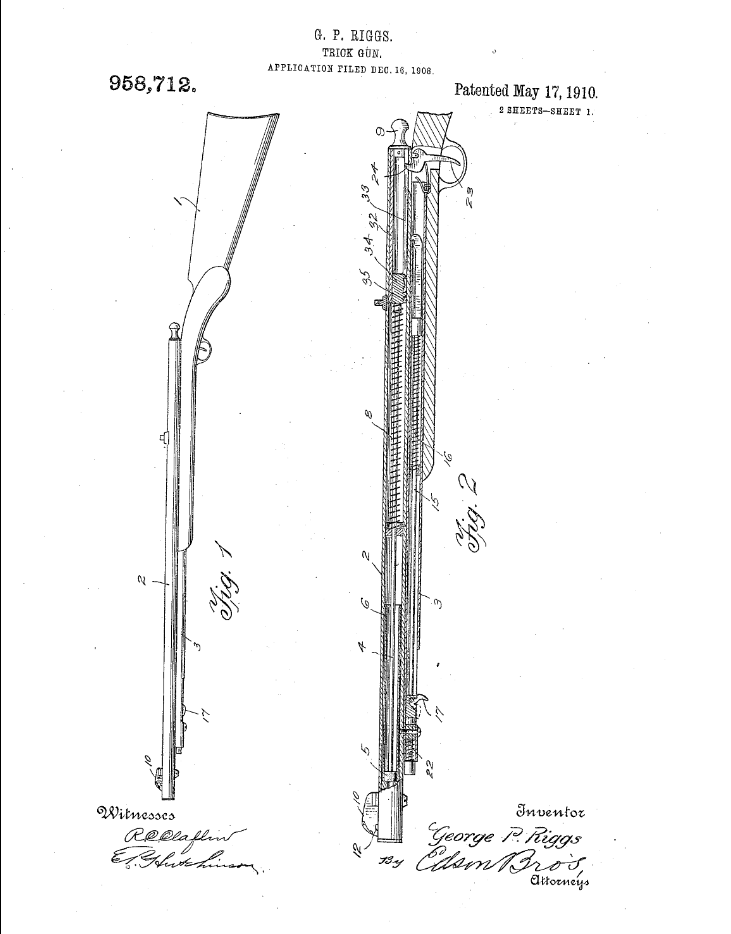
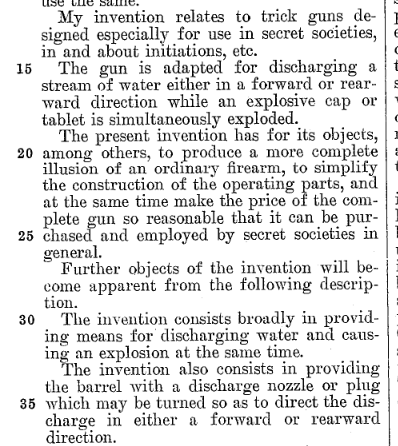
Posted By: Paul - Wed Apr 24, 2024 -
Comments (1)
Category: Clubs, Fraternities and Other Self-selecting Organizations | Guns | Patents | 1900s | Pranks









